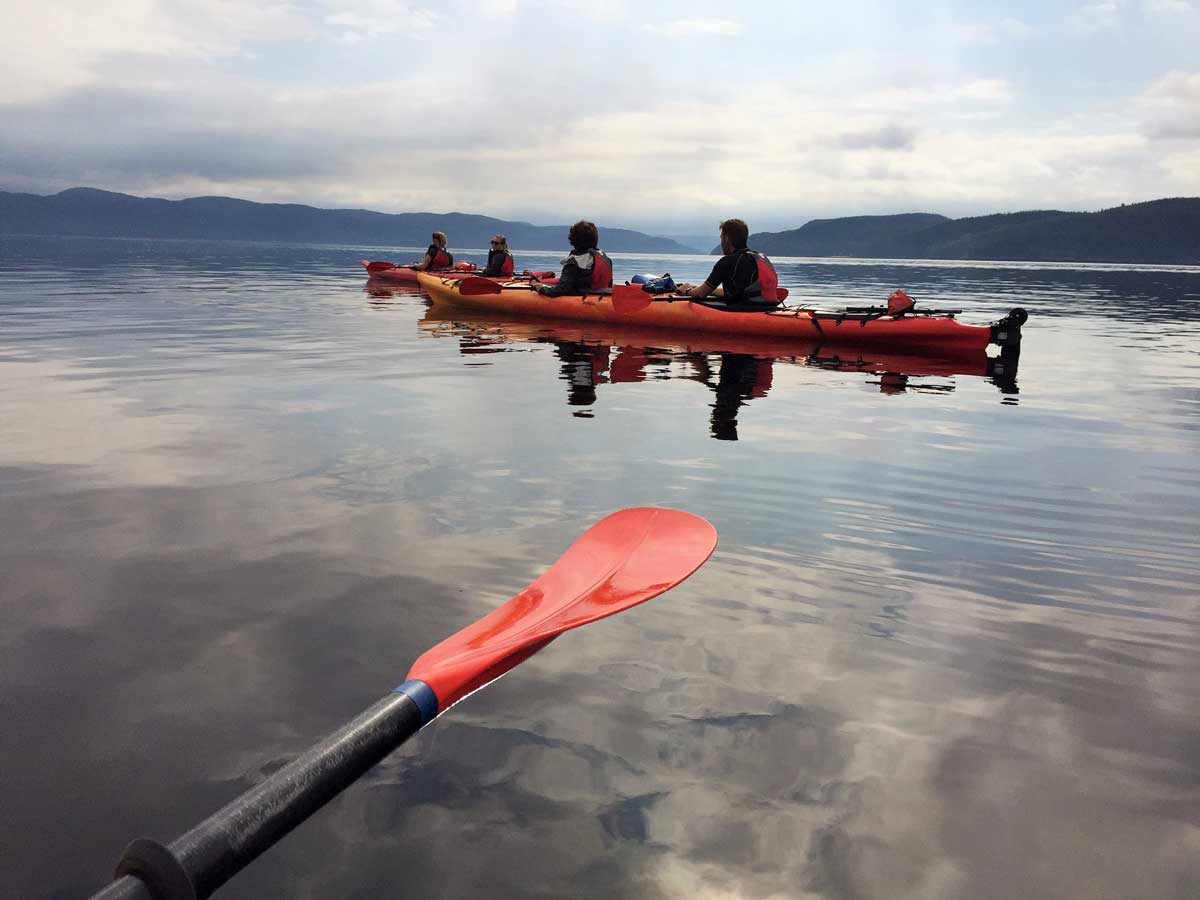My initial introduction to the city of Saguenay–Lac-Saint-Jean in Quebec is a serene one, with a drive through acres of farmland dotted with corn and cows. A collection of colorful barns is simply a preview of more attractions to come. At one point La Route des Bières (The Beer Route) runs adjacent to the road serving up five microbrewery stops along the trail (the only perk missing from this bicycle path is a designated driver). A bit further down the two-lane road, water appears and reappears from bend to bend—rivers to lakes to fjords—all embodying Saguenay’s name: “From where the water flows.”
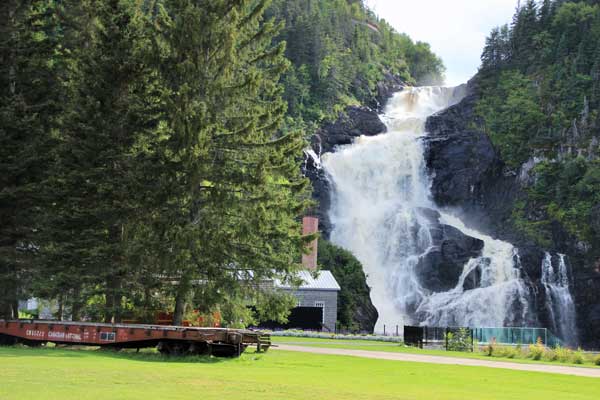
“Welcome to our region,” I’m warmly greeted at my first stop with a handshake and a seasonal snack, chocolate covered blueberries (the sampling from Pères Trappistes de Mistassini, Trappist monks and rumored to be the best). Coincidentally synced to wild blueberry season (mid-August to mid-September), my visit is highlighted by specialties such as blueberry butter, blueberry onion confit, and blueberry sausage. ‘Fresh and farmed’ characterizes the area’s food and drink, with agriculturalists and artisans selling local products from roadside stands to storefronts. Among the fresh-from-the-region fare are maple syrups, walleye fish, broad bean soup, Perron cheddar cheese, and sparkling wines made from raspberries, blackcurrants, grapes, and blueberries.
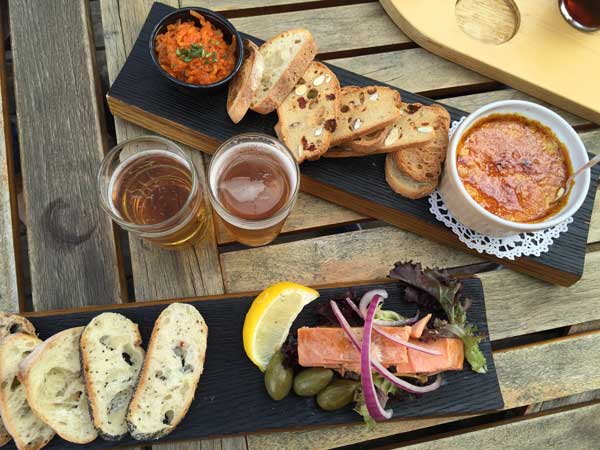
Beyond the month long affair with blueberries is a diverse topography—plains, forests, mountains, rivers, a lake as big as a sea, and one of the world’s longest navigable fjords lined with unspoiled villages. Some cliffs in the region are so steep they are accessible only by water. Even the Michelin Guide recognizes this natural attraction, listing the Saguenay Fjord as one of the planet’s must-see destinations—alongside internationally renowned landmarks like the pyramids of Egypt and the Eiffel Tower.
A white S-A-G-U-E-N-A-Y named sculpture accented with a red heart confirms you’ve arrived here in an area known for its independence and ingenuity. Since 1981, it’s been illegal for a woman to take her husband’s name; moms are not encouraged to stay at home; typical snacks are cheese curds, salt and vinegar chips, poutine and Pepsi (not Coke); the roads’ yellow & black warning signs caution motorists of moose, deer and snowmobiles; and opportunities to see bears are abundant.
At Okwari Aventures, from a watch tower, it’s possible to observe black bears in their natural habitat with the animals coming within a few feet of the open window viewing areas. Of the 3,500 black bears in the region 30 reside here. As timing is important, it’s key to note that from the end of June to mid-July there’s the potential to see cubs, and because of September’s blueberry season, it’s a good month for sightings. Additional options include hiking in the bear-free area, canoeing in a rabaska (a traditional birchbark vessel), and observing beavers in their environment.
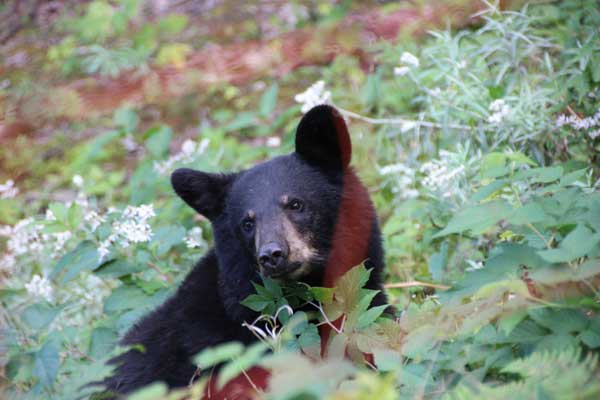
The same eclectic spirit, almost exclusive to Saguenay–Lac-Saint-Jean, defines the lodging prospects, which range creatively from traditional hotels and zoos to treehouses and ghost-towns. At Parc Aventures Cap Jaseux, a night in the wild translates to a treehouse stay 25 feet above ground reached by a trunk-mounted flight of steps, sleeping underneath a starlight dome or overnighting in a cozy suspended spherical treehouse. All are ensconced in the woods, some with views of the fjord through the trees. Nothing quite compares to waking at dawn to a symphony of chirping birds with the morning sun’s rays filtering through a forest’s canopy. An early start will let you take advantage of the large menu of activities—sea kayaking on the fjord (sunrise, sunset, or by moonlight), ascending the cliffs lining the fjord along the Via Ferrata (daytime and moonlight), and climbing the high ropes circuit which includes ziplining on seven giant lines.
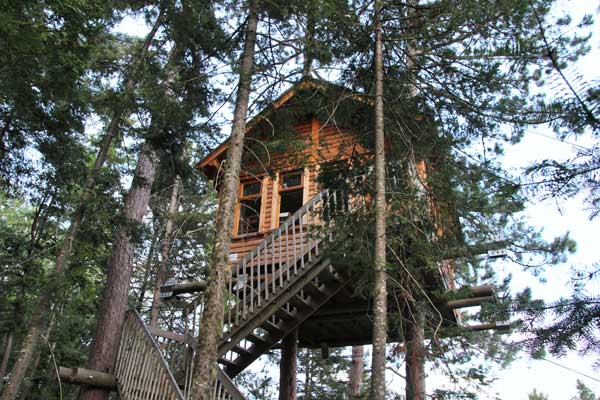
Imagine overnighting in Val-Jalbert, a ghost town to be, or hoping-to-be, if you will. This photogenic mill town from the 1920s is complete with 40 turn of the century houses, general store, convent school (sit in on Mother Superior’s lesson to her convent girls), post office, and imposing 236-feet high Ouiatchouan Falls (higher than Niagara’s). Here you can sleep in of one of the 24 luxuriously restored workers’ houses or above the general store, both projecting a back-in-the day vibe but with 21st century comforts. This is a village that was home to 950 at its peak in the 1920s but was abandoned until the 1960s. Today’s Val-Jalbert is a recreation of its former self, complete with “nuns” walking to school along Main Street, the “mayor” driving the tour bus, and the “mayor’s daughter” bicycling around town.
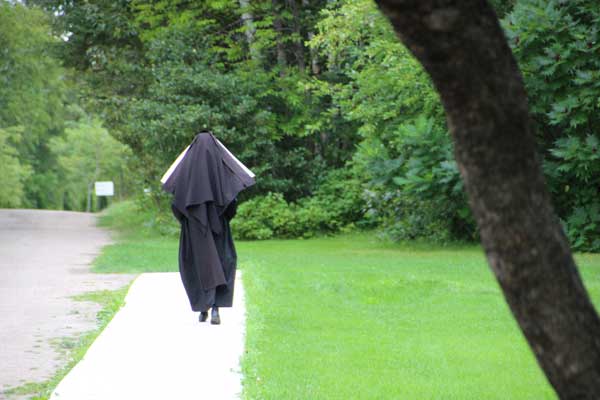
The 26-hour VIP overnight experience in the prospector tent at Zoo Sauvage de Saint-Félicien takes adventurous sleepovers to a unique level. Listed as one of the world’s ten most beautiful zoos, it’s home to more than 1,000 animals from 75 native or exotic species. This one-day-plus experience begins in an elevated, open air train winding more than four miles through acres of open territory (home to deer, moose, caribou, wolves, musk oxen, and bears). Only bears are able to traverse the zoo’s areas, and train stops to accommodate them are frequent, which translates to plenty of photo ops.
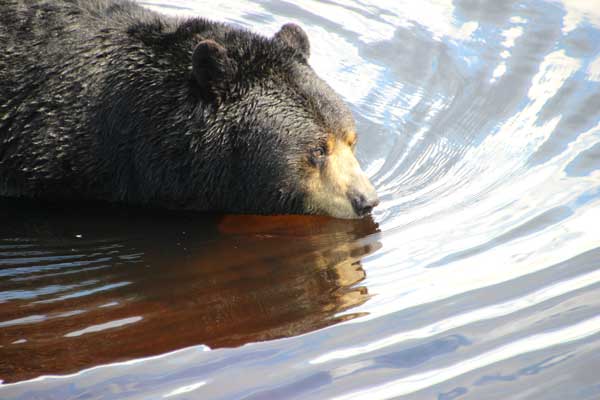
“We make the schedule,” says guide Maëlys. Lunch is in a home from 1905, moved from its original site to the zoo and reflective of the era, including a Singer sewing machine. Marguerite (the house’s sole occupant) serves a traditional meal of soup, chicken pie, and blueberry pie (a homemade menu that forever varies). She speaks in French and stays in character as she gives a brief tour of the yard before rushing us back into the house when a bear is spotted. Note, there are rules here: always walk in a group, never wander off, and be aware of your surroundings at all times.
To reach our campsite, the vehicle stops and Maëlys surveys the situation, quickly unlocking the gate to an enclosed area and just as quickly closing it. Once we’re settled and everything is securely tucked into our tents, some of us head out for moose tracking while others opt for a sunset canoe ride on a lake where bison can be spotted. After an old-fashioned meal cooked over an open flame, the day ends with campers surrounding the fire to roast s’mores. Before departing the next morning, we visit the new animal nursery and go backstage to observe the vets at work. The whole zoo experience can best be described as a Canadian safari with a guarantee of adventure. Who could forgo a night in the wild surrounded by roaming animals?
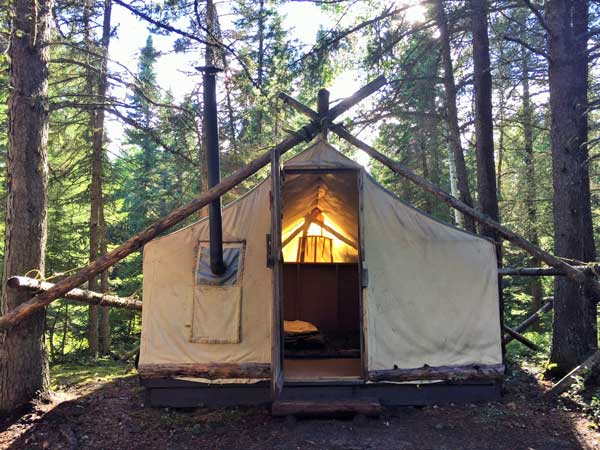
Returning on the water, passengers get a close-up look at the Saguenay Fjord from the comfort of Les Navettes Maritimes du Fjord (the Fjord Marine Shuttle). Three ships offering daily departures from a variety of boarding points and traversing from village to village are the perfect vantage for whale watching.
If arrival to the region is by sea, the port of Saguenay doesn’t disappoint. Recognized for the “best international port welcome” four years running, the passengers receive a lively greeting from a costumed cast of the region’s summer theater production, “La Fabuleuse Histoire d’un Royaume” (“The Fabulous Story of a Kingdom”). Celebrating its 30th season, and noted as the country’s first large-scale historic performance, the show features 150 actors, horses, cars, flooding, cannon shots, explosions of fire, and a whirlwind of music and dance. So hospitable and gregarious are the people of Saguenay–Lac-Saint-Jean that although French is mostly spoken (with a bit of English here and there), should a non-French speaking visitor need help, it’s not uncommon for a local to find someone who can assist, and if that’s not possible, communicate through a game of charades.
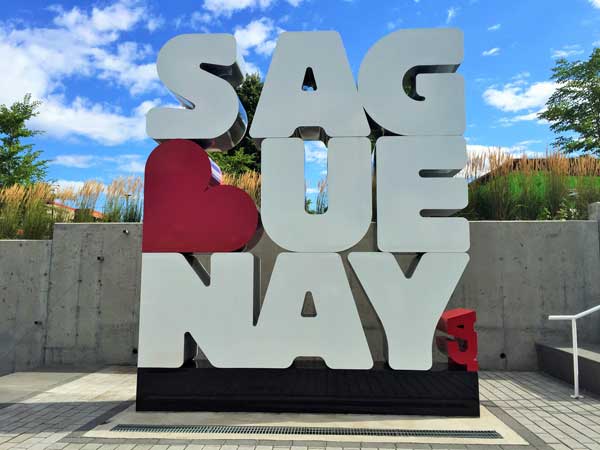
As I bid my silent farewell to this remote retreat, I hear “Au revoir,” when walking through security before boarding my flight. Now I can only find comfort in my carry-on snack—a bag of chocolate covered blueberries which I’ll enjoy with a Pepsi (not a Coke).
*The city of Saguenay is Quebec’s sixth largest, and the region of Saguenay–Lac-Saint-Jean is almost four times the size of Belgium, with a homespun atmosphere. To locals it’s “a small village at the end of the road.” www.saguenaylacsaintjean.ca
The area code for Saguenay–Lac-Saint-Jean is 418.
[alert type=white]
Where to Stay:
Parc Aventures Cap Jaseux – Self-described as “a renowned destination in adventure and eco-tourism,” this park of adventures, with unique accommodations such as treehouses, is open from late May to mid-October, with peak season from June 24 to the first Monday in September. 250 Chemin de la Pointe aux Pins, Saint-Fulgence; 418-674-9114; www.capjaseux.com/en
Val-Jalbert – An impressive mock ghost-town with overnight options. For a peek into its history and to best understand the town, the first stop should be at the old pulp mill to watch its 360-degree multi-media production, an “immersive sensory experience,” that transports you to the turn of the 20th century. As village visits are seasonal (from late May to mid-October), book early as July and August fill up soon. 95 Rue Saint-George, Chambord, 418-275-3132; www.valjalbert.com/en
Zoo Sauvage de Saint-Félicien – Called “Land of the Caribou,” this night in the wild is one where you are caged and the animals run free in their vast natural environment (though caribou are within your multi-acre enclosure). Accommodations are available June through mid-October, though the zoo is open both summer and winter. 2230 Boulevard du Jardin, Saint-Félicien; 418-679-0543; www.zoosauvage.org/en
Where to Eat and Drink:
Microbrasserie du Lac Saint-Jean – An award-winning microbrewery within walking distance of beaches and the blueberry trail and known for homemade beers, such as its famous Gros Mollet and 10 seasonal draught beers (enhanced by the use of regional spices). Its equally revered menu offers choices such as escargot and cream puff pastry, foie gras crème brulee, and beeramisu (ladyfingers soaked in beer syrup and topped with mascarpone mousse). 120 Rue de la Plage, Saint-Gédéon; 418-345-8758; www.microdulac.com/en
Restaurant du Moulin – Located within the old industrial mill of Val-Jalbert, Chef Carl Murray is at the helm of this fine dining establishment. Having served as chef for six years, his connection to the site is more than longevity—his grandfather was once employed as a mill worker. Chef’s recently created Heritage Meals showcase recipes of the village’s past. Val-Jalbert, Chambord; 418-275-3132; www.valjalbert.com/en
Auberge-Bistro Rose & Basilic – By using regional herbs, spices, honey, blueberry liqueur, cheeses and more, this urban inn focuses on the flavors of Saguenay–Lac-Saint-Jean, featuring such menu items as salmon tartar, house rillettes, pan fried scallops, and shrimp and chocolate fondant. 600 Boulevard des Cascades, Alma; 418-669-1818; www.roseetbasilic.com
What to See & Do:
Site de la Nouvelle-France – An archeological site where movies such as The Black Robe were filmed, this is a replication of Champlain’s first settlement in Quebec City. Daily life in the 17th century is depicted, complete with colorful characters acting as colony habitants. 370 Vieux-Chemin, Saint-Félix-d’Otis; 418-544-8027; www.sitenouvellefrance.com
Musée du Fjord – Located on the shores of the Saguenay River’s Baie des Ha! Ha! cove, this museum features a 14,000-gallon salt water aquarium; a starfish pool, sea cucumbers, urchins, and other species. There are also outdoor activities such as digging in the fjord’s tidal pools and guided excursions to discover minerals, plants and wildlife. 3346 Boulevard de la Grande-Baie-Sud, La Baie; 418-697-5077; www.museedufjord.com/en
[/alert]

